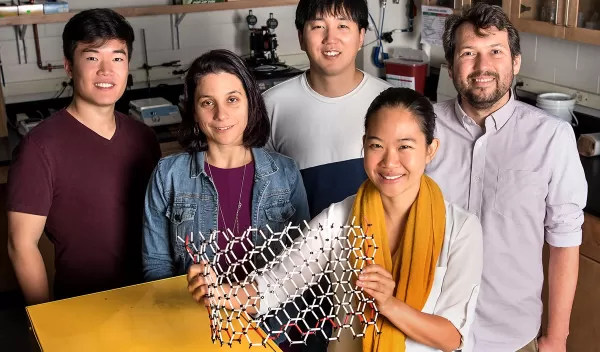
Graphene: The more you bend it, the softer it gets
New research by NSF-funded engineers at the University of Illinois combines atomic-scale experiments with computer modeling to determine how much energy it takes to bend multilayer graphene -- a question that has eluded scientists since graphene was first isolated. The findings are reported in the journal Nature Materials.
Graphene -- a single layer of carbon atoms arranged in a lattice -- is the strongest material in the world and so thin that it is flexible, the researchers said. It is considered one of the key ingredients of future technologies.
Most of the current research on graphene targets the development of nanoscale electronic devices. Yet, researchers say that many technologies -- from stretchable electronics to tiny robots so small they cannot be seen with the naked eye -- require an understanding of the mechanics of graphene, particularly how it flexes and bends, to unlock their potential.
By draping multiple layers of graphene over a step just one to five atoms high, the researchers created a controlled and precise way of measuring how the material would bend in different configurations.
"These results not only resolve a decade-long question in our understanding of graphene, they have implications for the creation of machines that are small and flexible enough to interact, for example, with cells or other biological materials," says Dan Finotello, a program director in NSF's Division of Materials Research. "There are significant implications for the mechanical properties of two-dimensional materials and devices."


